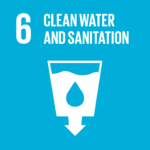Water The article is initially published on March 21, 2024
The global demand for freshwater is soaring as supply is becoming more uncertain. Today, one out of six people—more than a billion—do not have adequate access to safe water. When water is scarce or polluted, or when people have unequal or no access, tensions can rise between communities and countries.
Water management in Southeast Asia is entangled in a web of challenges rooted in the region’s unique geography, climate, booming population, and rapid economic growth. The alarming increase in greenhouse gas emissions and resultant temperature surges have left the area particularly susceptible to climate change’s ravages. The United Nations projects that by 2025, half of the countries worldwide will face water stress or outright shortages. By 2050, as many as three out of four people around the globe could be affected by water scarcity.
RELEVANT SUSTAINABLE GOALS


Ten Water Management Issue in Southeast Asia Region
Home to 60% of the global population, with a significant number residing in rapidly expanding urban centers, Southeast Asia faces increased flooding risks. These urban areas, growing on flood plains, interfere with natural watercourses, escalating flood dangers and amplifying water stress.
1. Water Scarcity
Countries in Southeast Asia are grappling with an escalating water crisis, exacerbated by the impacts of climate change. Phenomena like El Niño-induced droughts, saline intrusion, and widespread pollution are putting immense strain on water supplies. As major agricultural producers, Thailand, Vietnam, and Indonesia find themselves especially susceptible to the threats of water scarcity
In the Philippines, water scarcity is a perennial challenge, primarily due to Metro Manila and the surrounding provinces—home to approximately 15 million people—relying on a single dam for 90% of their raw water needs. This precarious situation is further aggravated by a dry season that extends for six to eight months annually, coupled with ongoing population growth.
2. Water Pollution
The 2023 UN World Water Development Report highlights that while the proportion of the global population with access to safely managed drinking water services has increased from 70% to 74%, significant disparities remain across and within regions. Approximately 844 million people globally still do not have access to safe water, with around 110 million of these individuals residing in Southeast Asia.
The region experiences higher annual water withdrawals and return flows than anywhere else in the world, with an estimated 142 km³ of wastewater generated annually, excluding agricultural drainage. The lack of adequate sanitation, sewerage, and wastewater treatment facilities means a significant portion of this wastewater ends up in water bodies, potentially used for human consumption.
The challenge is compounded by non-point source pollution, primarily from agriculture, exacerbated by the escalating use of agrochemicals. Industrial waste contributes to the dilemma as Asia’s economies expand. This situation poses dire consequences for both the environment and public health: 42% of deaths linked to unsafe or inadequate water, sanitation, and hygiene provisions occur in Asia. While Asian countries are actively seeking solutions, the need for a more rapid and extensive policy response is critical.
Key initiatives across Southeast Asia involve the construction of wastewater treatment plants and the restoration of degraded water resources, with countries like Thailand, the Philippines, and Indonesia enacting water quality legislation to curb pollution. However, enforcement remains a significant challenge, particularly in fast-industrializing economies with limited institutional capacity. Economic measures, such as taxation and the reduction of fertilizer subsidies, often conflict with development objectives, while the high cost of monitoring discourages voluntary compliance.
3. Flood Management
Flooding represents a perennial challenge in Southeast Asia, impacting 13% of the ASEAN population. As climate change exacerbates the severity and frequency of floods, the urgency for enhanced mitigation efforts and proactive measures becomes paramount. The ASEAN Risk Monitor and Disaster Management Review’s 2020 research underscores flooding as the predominant disaster in the region, with 13 percent of the ASEAN populace at risk and USD 926 billion in capital stock vulnerable to damage. Vietnam, Indonesia, and Thailand are the most affected, with 26 million, 20 million, and 13 million individuals at risk, respectively. Meanwhile, Singapore, despite having the lowest multi-hazard exposure, faces significant risk, with 93 percent of its population exposed to flood hazards.
With the help of predictive models, Flood Frequency Analysis (FFA) is used to predict (through probability) the magnitude, location and extent of future flooding events. Past data is central to the process, with information taken from scientific instruments such as stream gauges which monitor peak water flow over extended periods.
4. Cross-Border Water Resource Management
The transboundary nature of many river basins underscores the necessity of collaborative management and effective water quality strategies, which hinge on the comprehensive collection, analysis, and sharing of data. Despite some progress, data collection remains sporadic and analysis often insufficient in most countries. The Southeast Asian Integrated River Management Project aims to address these issues by fostering cooperation among communities, industries, and governments to rejuvenate the region’s rivers.
5. Climate Change
The escalating threat of climate change, through increased rainfall and rising sea levels, necessitates that all Southeast Asian countries fortify their capacities for flood mitigation and management. This looming crisis demands a concerted effort to arm nations with the necessary tools and knowledge to safeguard their communities against the devastating impacts of flooding.
6. Sustainable Development
Navigating the delicate equilibrium between economic growth and environmental stewardship presents a significant quandary in the realm of water management across Southeast Asia. The region’s rapid economic expansion over the past decade has precipitated a surge in water (and energy) demand, further intensifying the challenges of water scarcity and pollution.
7. Groundwater Overexploitation
In several regions, the relentless extraction of groundwater for irrigation and domestic purposes is precipitating a critical depletion of aquifers and encroachment of saltwater, rendering the water unfit for both drinking and agricultural activities. In countries such as Indonesia and Viet Nam, as much as 79% of the population depends on groundwater for drinking. Excessive groundwater use has led to aquifer depletion and saltwater intrusion, urging the adoption of alternative water sources and improved demand management.
Groundwater overexploitation has raised concerns about resource sustainability and environmental degradation, and in turn the associated impacts on climate change and societal well-being. To combat this pressing issue, it is imperative to implement a suite of additional strategies. These include enhancing the use of non-traditional water sources, bolstering surface water storage capabilities, and refining water demand management practices.
8. Infrastructure Deficits
Numerous regions are grappling with insufficient water infrastructure, a deficiency that hampers access to safe drinking water and heightens the risk of flooding. This situation calls for immediate and comprehensive enhancements in water management and the development of infrastructure. Concurrently, the overuse of groundwater has precipitated a decline in aquifer levels and an increase in saltwater intrusion, underscoring the necessity for embracing alternative water sources and refining demand management practices.
9. Population Growth
The intricate link between economic activities, population growth, and the utilization of water resources is evident within the ASEAN region. An increase in GDP per capita coupled with rapid urban population expansion in recent decades has led to a marked rise in water demand. Studies forecast that the average water consumption in ASEAN cities, such as Yangon (Myanmar) and Penang (Malaysia), is set to double by 2040, reaching 2,519 million litres per day and 1,696 million litres per day, respectively (ADB 2020; PBA n.d.). This burgeoning demand has undeniably escalated the strain on the region’s water sources. Consequently, the surge in demand, amidst the pressure on water resource availability, has led to a decline in water resource per capita availability, highlighting the critical need for sustainable water management strategies in the ASEAN countries.
10. Water Governance and Policies
The efficacy of water management strategies is frequently compromised by inconsistent governance, a lack of cohesive water management, and overlapping responsibilities among different agencies. Effective environmental policies cannot be confined to local scopes; instead, they must be comprehensive, encompassing the intricacies of ecological systems to truly address the multifaceted challenges of water management.
Southeast Asia’s struggle against water pollution is complex, weaving through agricultural expansion, industrial advancement, and rising domestic waste. A unified approach, merging effective governance, technological innovation, and community involvement, is imperative. As Asia strides towards economic growth, prioritizing water resource protection is paramount. The path to clean water is intricate but achievable through collective action, ensuring a resilient future for the region and its people.
Lead image courtesy of Asha Natasha via Getty Images



